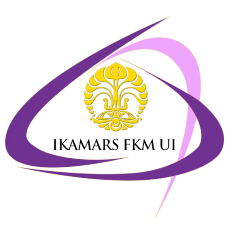Abstract
There is a fundamental change of hospital’s payment system in Indonesia since the Indonesian National Health Insurance was implemented (January 2014). The former retrospective payment system was changed into prospective payment system with Indonesia Case Base Groups (INA-CBG) as expense base. This change forced hospital to propose a new efforts to adjust the rate difference between the previous hospital based-tariff system and the latter INA-CBG-based-tariff system in order to assure the health service quality. This study aims to find out hospital’s efforts to adjust the tariff difference between the hospital-based- tariff system and INA-CBG-based-tariff-system.This is a quantitative as well as qualitative research. There were 2384 cases analyzed, with 645 cases (27.1%) with positive tariff balance and 1739 cases (72.9%) with negative tariff balance. Tariff differences was Rp. 135.871.977 (27.5% of the total hospital tarif). Average hospital tariff was Rp. 221.683, while the average INA CBG’s tariff was Rp. 278.676 and average difference was Rp 56.993. Hospital claim for chronic disease, which was not included in INA-CBG’s list, increased the positive balance to Rp. 187.208.274 (35,42% of hospital total tariff). Medication became the biggest part of the hospital cost (37.4%). The hospital’s management had worked efficiently to control the cost and assure the quality. Cost-efficiency-efforts as well as good remuneration system had been implemented from planning to evaluation. Hospital had to arrange and implement the clinical pathway as a standardization as well as quality control.
Bahasa Abstract
Jaminan Kesehatan Nasional yang implementasinya dimulai Januari 2014 membuat perubahan system pembayaran dari Retrospektive Paymant System ke Prospective Payment System dengan tarif INA-CBG’s. Perbedaan tarif INA-CBG’s dan tarif RS menjadi masalah mendasar sehingga RS harus melakukan upaya agar tercapai kendali mutu dan biaya.Tujuan penelitian ini adalah untuk mengetahui upaya yang diambil RS terkait perbedaan tarif rumah sakit pelayanan rawat jalan dengan tarif INA-CBG’s. Metode penelitian dilakukan secara kuantitatif dan kualitatif .Hasil penelitian menunjukkan bahwa 645(27,1 %) kasus dari total 2384 kasus memiliki selisih negatif dan1739 (72,9%) kasus dengan selisih positif. Rerata tarif RS Rp 221.683 dan rerata tarif INA-CBG’s Rp278.676 dengan rerata selisih tarif Rp56.993. Total selisih tarif Rp135.871.933 atau 25,7% dari tarif RS.Selisih tarif positif ini sangat baik bagi RS dan dapat digunakan untuk peningkatan pelayanan dan pengembangan RS. Klaim obat penyakit kronis diluar tarif paket INA CBG’s menambah selisih positif menjadi Rp.187.208.274 atau mendapat surplus sebesar 35,42% dari total tarif RS. Komponen tarif RS yang terbesar adalah obat sebesar 37,4%. Pihak manajemen menerapkan upaya efisiensi biaya dari mulai proses perencanaan sampai evaluasi, dengan tetap mengutamakan mutu, mempercepat penyusunan dan implementasi clinical pathway agar pelayanan lebih terstandarisasi dan dapat meningkatkan kualitas pelayanan serta sistem remunerasi yang baik yang mencerminkan asas adil dan layak
Recommended Citation
Dumaris, Hotma
(2016)
"Analisis Perbedaan Tarif Rumah Sakit dan Tarif INA-CBG’s Pelayanan Rawat Jalan di RSUD Budhi Asih Jakarta Tahun 2015,"
Jurnal ARSI : Administrasi Rumah Sakit Indonesia: Vol. 3:
No.
1, Article 3.
DOI: 10.7454/arsi.v3i1.2209
Available at:
https://scholarhub.ui.ac.id/arsi/vol3/iss1/3







